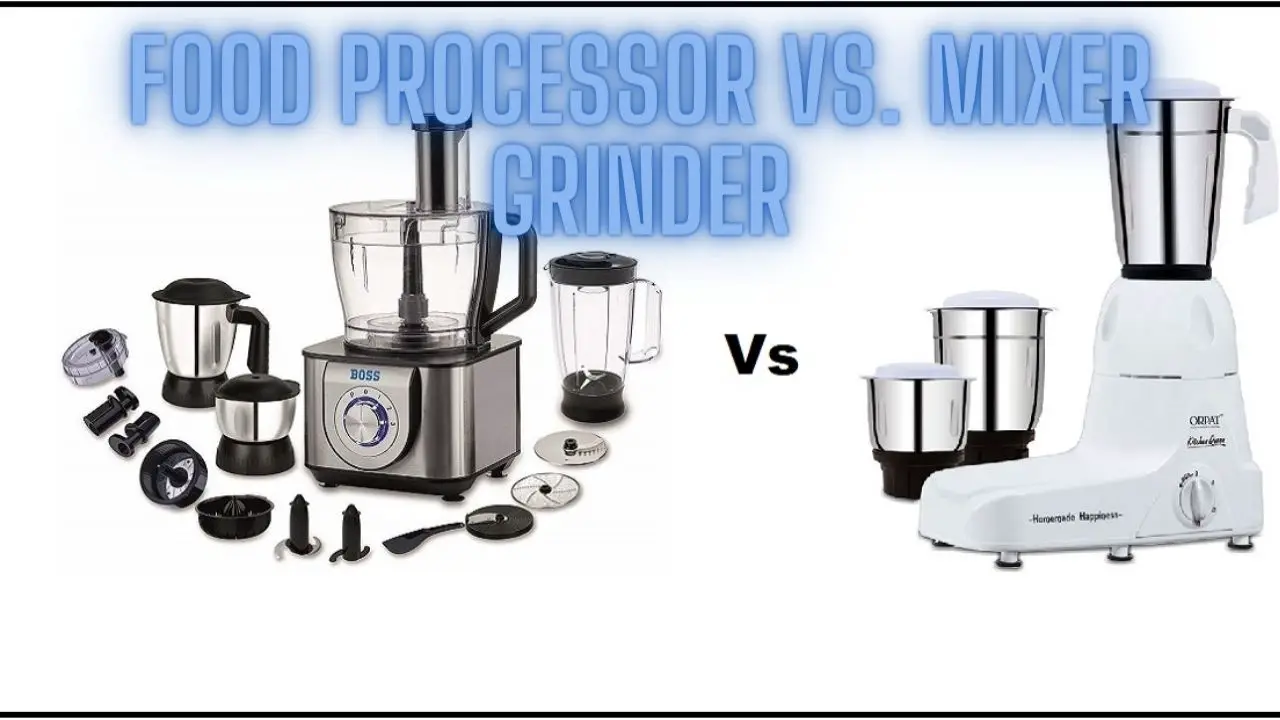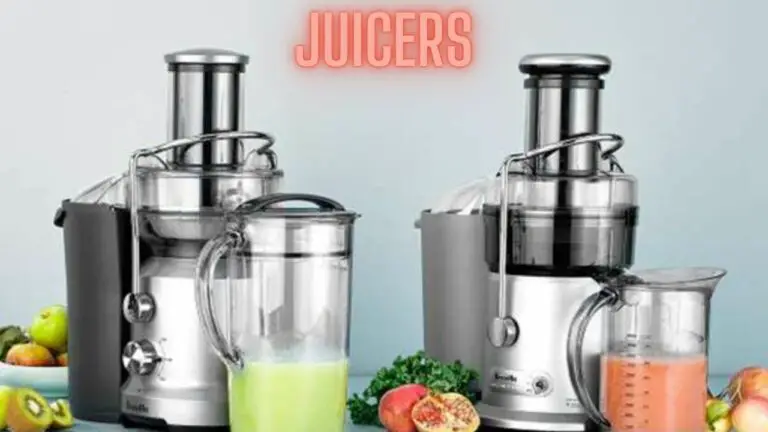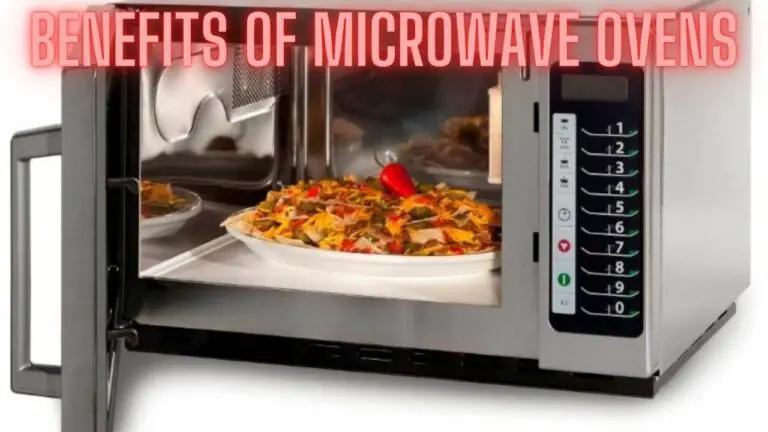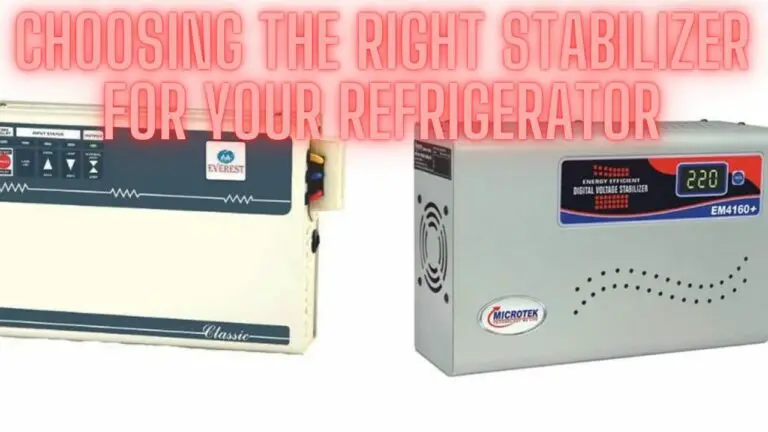Food Processor vs. Mixer Grinder: Unveiling the Culinary Contenders
Introduction
Kitchen appliances play a crucial role in modern culinary practices, aiding in food preparation, cooking, and meal planning. Among the essential appliances found in kitchens worldwide are food processors and mixer grinders. In this comparison, we will explore the distinct features, functions, advantages, and disadvantages of these two appliances to help you make informed decisions based on your cooking needs and preferences.
- Purpose of the Comparison:
- The purpose of this comparison is to provide readers with a comprehensive understanding of the differences between food processors and mixer grinders. By examining their respective features, functions, and applications, readers can determine which appliance best suits their culinary requirements and enhances their cooking experience.
- Importance of Kitchen Appliances:
- Kitchen appliances are indispensable tools that streamline food preparation, save time and effort, and enable creativity in the kitchen. Whether chopping vegetables, grinding spices, mixing batters, or pureeing ingredients, appliances like food processors and mixer grinders play a vital role in achieving culinary excellence and culinary delights.
As we delve into the intricacies of food processors and mixer grinders, we aim to provide you with valuable insights and guidance to empower you in making informed decisions about your kitchen arsenal. Whether you’re a seasoned chef, a home cook, or someone exploring the world of cooking for the first time, understanding the nuances of these kitchen appliances will undoubtedly elevate your culinary endeavors. So let’s embark on this journey of exploration and discovery into the realm of food processors and mixer grinders.
Food Processor
A food processor is a versatile kitchen appliance designed to facilitate various food preparation tasks, ranging from chopping and slicing to shredding and pureeing. Let’s explore the key features, functions, advantages, and disadvantages of food processors:
- Definition and Features:
- A food processor is a motorized appliance equipped with a range of interchangeable blades, discs, and attachments to perform diverse food processing tasks.
- Key features of a food processor include a motorized base, a work bowl or container, a feed tube or chute for adding ingredients, and various blades and discs for cutting, slicing, shredding, and mixing.
- Functions and Capabilities:
- Food processors are capable of performing a wide range of functions, including chopping vegetables, grinding nuts, pureeing fruits, kneading dough, emulsifying sauces, and more.
- They come with multiple speed settings and pulse functions to control the texture and consistency of processed ingredients, allowing for precise customization based on recipe requirements.
- Advantages:
- Versatility: Food processors excel at performing a variety of food preparation tasks, making them indispensable tools for culinary enthusiasts and home cooks.
- Time-Saving: Food processors significantly reduce the time and effort required for labor-intensive tasks such as chopping, slicing, and shredding, allowing for quicker meal preparation.
- Consistency: Food processors deliver consistent results, ensuring uniformity in texture and size when processing ingredients, which is especially useful for recipes requiring precise measurements.
- Disadvantages:
- Bulky Size: Food processors tend to be bulky and require ample countertop or storage space, which may be a limitation in smaller kitchens or crowded countertops.
- Limited Liquid Capacity: Some food processors have limited liquid capacity, which can lead to spillage or overflow when processing large quantities of liquid ingredients.
- Complex Assembly and Cleaning: Food processors may have multiple components and attachments that require assembly and disassembly for cleaning, which can be time-consuming and cumbersome.
Despite these limitations, food processors remain indispensable kitchen appliances for their versatility, efficiency, and ability to streamline food preparation tasks, making them essential tools for culinary enthusiasts and home cooks alike.
Mixer Grinder
A mixer grinder is a versatile kitchen appliance used for grinding, blending, and mixing ingredients to prepare a variety of dishes. Let’s delve into the key features, functions, advantages, and disadvantages of mixer grinders:
- Definition and Features:
- A mixer grinder is a motorized appliance that combines the functions of a grinder and a mixer. It typically consists of a motorized base unit with one or more jars or containers for grinding and mixing.
- Key features of a mixer grinder include multiple speed settings, interchangeable jars or containers of different sizes, and stainless steel blades for grinding and blending.
- Functions and Capabilities:
- Mixer grinders are primarily used for grinding dry spices, grains, and pulses, as well as blending wet ingredients such as fruits, vegetables, and liquids.
- They can perform a wide range of tasks, including grinding spices and coffee beans, making chutneys and sauces, preparing batters for dosa and idli, and mixing ingredients for smoothies and shakes.
- Advantages:
- Convenience: Mixer grinders offer convenience and versatility by combining multiple kitchen tasks into one appliance, reducing the need for separate grinding and mixing tools.
- Time-Saving: Mixer grinders expedite food preparation by quickly grinding and mixing ingredients, allowing for faster meal preparation and cooking.
- Compact Design: Mixer grinders are generally compact and space-saving, making them suitable for small kitchens or limited countertop space.
- Disadvantages:
- Limited Grinding Capacity: Some mixer grinders may have limited grinding capacity, which can be a drawback when processing large quantities of ingredients or grinding tough items such as nuts or grains.
- Noise and Vibration: Mixer grinders can generate noise and vibration during operation, especially at higher speed settings, which may be bothersome in quiet or enclosed spaces.
- Durability Concerns: Lower-quality mixer grinders may be prone to wear and tear over time, particularly with frequent use or heavy-duty grinding tasks, leading to issues such as motor overheating or blade dullness.
Despite these limitations, mixer grinders are versatile kitchen appliances that offer convenience, efficiency, and versatility for a wide range of food preparation tasks. With proper care and maintenance, a high-quality mixer grinder can be a valuable addition to any kitchen, helping to streamline cooking processes and enhance culinary creativity.
Comparison between Food Processor and Mixer Grinder
When deciding between a food processor and a mixer grinder, it’s essential to understand their key differences in terms of features, functions, advantages, and disadvantages. Here’s a comprehensive comparison between the two appliances:
- Food Processing Functions:
- Food Processor:
- Ideal for chopping, slicing, shredding, pureeing, kneading dough, and making sauces, dips, and spreads.
- Equipped with various blades, discs, and attachments for versatile food processing tasks.
- Mixer Grinder:
- Primarily used for grinding dry spices, grains, and pulses, as well as blending wet ingredients like fruits, vegetables, and liquids.
- Capable of making chutneys, sauces, batters, and smoothies, but with less precision compared to a food processor.
- Food Processor:
- Grinding and Mixing Functions:
- Food Processor:
- Suitable for grinding small quantities of dry ingredients but may not achieve as fine a grind as a dedicated grinder.
- Can mix ingredients, but not as effectively as a mixer grinder due to the absence of specific blending functions.
- Mixer Grinder:
- Specialized for grinding dry spices, grains, and pulses to a fine powder consistency.
- Offers superior mixing and blending capabilities for wet ingredients, making it ideal for preparing chutneys, sauces, and batters.
- Food Processor:
- Versatility and Multi-functionality:
- Food Processor:
- Highly versatile appliance capable of performing a wide range of food processing tasks, making it suitable for various recipes and cooking styles.
- Mixer Grinder:
- Versatile appliance with grinding and mixing capabilities, but primarily used for specific tasks such as grinding spices and blending liquids.
- Food Processor:
- Motor Power and Performance:
- Food Processor:
- Typically equipped with a powerful motor suitable for heavy-duty food processing tasks such as kneading dough and shredding vegetables.
- Mixer Grinder:
- Features a robust motor designed for grinding hard ingredients and blending liquids efficiently, ensuring consistent performance.
- Food Processor:
- Size and Design:
- Food Processor:
- Tends to be larger and bulkier due to the inclusion of multiple blades, discs, and attachments.
- Requires ample countertop or storage space and may not be suitable for compact kitchens.
- Mixer Grinder:
- Generally compact and space-saving, making it suitable for small kitchens or limited countertop space.
- Comes in a variety of sizes and designs to accommodate different usage requirements and preferences.
- Food Processor:
- Cost Considerations:
- Food Processor:
- Typically more expensive than a mixer grinder due to its versatility and multi-functionality.
- Higher upfront cost may be justified by the range of food processing tasks it can perform.
- Mixer Grinder:
- Generally more affordable than a food processor, making it a budget-friendly option for basic grinding and mixing needs.
- Lower cost may appeal to consumers seeking a cost-effective solution for specific kitchen tasks.
- Food Processor:
In summary, the choice between a food processor and a mixer grinder depends on individual cooking preferences, usage requirements, and budget considerations. A food processor offers superior versatility and functionality for a wide range of food processing tasks, while a mixer grinder excels at grinding dry ingredients and blending wet ingredients efficiently. Consider your specific cooking needs and prioritize features that align with your culinary preferences to make the best decision for your kitchen.
Applications and Best Uses
Understanding the ideal applications and best uses of a food processor and a mixer grinder can help you maximize their functionality and efficiency in the kitchen. Here’s a breakdown of their respective applications:
- Food Processor:
- Chopping and Slicing: Use the food processor’s chopping and slicing blades to quickly and efficiently chop vegetables, fruits, nuts, and herbs for salads, soups, stews, and garnishes.
- Shredding: Shred vegetables like carrots, cabbage, and potatoes for coleslaw, salads, and vegetable fritters with the shredding disc attachment.
- Pureeing and Blending: Make smooth purees, sauces, and dips like hummus, pesto, and salsa using the food processor’s blending function.
- Kneading Dough: Use the dough blade attachment to knead bread, pizza, and pastry dough effortlessly for homemade baked goods.
- Grinding: While not as fine as a dedicated grinder, the food processor can grind small quantities of spices, grains, and nuts for cooking and baking purposes.
- Mixer Grinder:
- Grinding Dry Ingredients: Grind spices, grains, pulses, and coffee beans to a fine powder consistency for use in curries, masalas, and beverages.
- Blending Wet Ingredients: Blend wet ingredients such as fruits, vegetables, yogurt, and liquids to make smoothies, shakes, lassis, and purees.
- Making Pastes and Chutneys: Prepare flavorful chutneys, sauces, marinades, and pastes by blending ingredients like coconut, garlic, ginger, and spices.
- Preparing Batters: Create smooth and lump-free batters for dosas, idlis, pancakes, and crepes by blending soaked grains and lentils to the desired consistency.
- Mixing Dough: While not as robust as a food processor, some mixer grinders come with dough kneading attachments to mix and knead dough for breads, chapatis, and rotis.
- Combined Applications:
- Both appliances can be used for common tasks such as chopping vegetables, making sauces, and grinding spices, but they excel in different areas.
- Use the food processor for tasks requiring precision chopping, slicing, and shredding, as well as heavier-duty tasks like kneading dough.
- Utilize the mixer grinder for efficient grinding of dry ingredients and blending of wet ingredients, especially for recipes requiring smooth textures and homogeneous mixtures.
By leveraging the unique capabilities of each appliance and understanding their optimal applications, you can enhance your culinary repertoire and streamline your cooking processes in the kitchen. Whether you’re preparing everyday meals or experimenting with new recipes, the right appliance can make a significant difference in achieving delicious and satisfying results.
Considerations for Purchasing
When purchasing a food processor or a mixer grinder, several important factors should be taken into account to ensure that you choose the right appliance for your cooking needs and preferences. Here are some key considerations to keep in mind:
- Kitchen Requirements and Cooking Habits:
- Assess your cooking habits, frequency of use, and the types of recipes you typically prepare to determine which appliance would best suit your needs.
- Consider the size of your household and the portion sizes you typically cook for to determine the appropriate capacity of the appliance.
- Functionality and Features:
- Evaluate the specific functions and features offered by each appliance, such as chopping, slicing, shredding, pureeing, grinding, and blending.
- Determine which tasks are most important to you and prioritize appliances that excel in those areas.
- Budget and Affordability:
- Set a budget for your purchase and compare prices across different brands and models to find the best value for your money.
- Consider the long-term cost savings and benefits of investing in a higher-quality appliance with durable construction and reliable performance.
- Space and Storage Constraints:
- Consider the available countertop and storage space in your kitchen and choose an appliance that fits comfortably within your kitchen layout.
- Opt for compact and space-saving designs if you have limited countertop or storage space, or consider appliances that come with detachable components for easy storage.
- Brand Reputation and Warranty:
- Research reputable brands with a track record of manufacturing high-quality kitchen appliances and providing excellent customer service.
- Check product reviews, customer feedback, and ratings to gauge the reliability and performance of the appliance.
- Look for appliances that come with a warranty or guarantee to provide peace of mind and protection against defects or malfunctions.
- Ease of Use and Cleaning:
- Choose appliances with user-friendly controls, intuitive interfaces, and easy-to-clean components for hassle-free operation and maintenance.
- Consider appliances with dishwasher-safe parts or removable components for convenient cleaning and upkeep.
- Power and Performance:
- Assess the motor power and performance capabilities of the appliance, including speed settings, motor strength, and noise levels.
- Opt for appliances with sufficient power and performance to handle your cooking tasks efficiently and effectively without overheating or straining the motor.
- Safety Features:
- Prioritize appliances with built-in safety features such as overload protection, automatic shut-off, and safety interlocks to prevent accidents and ensure user safety during operation.
By considering these factors and conducting thorough research, you can make an informed decision when purchasing a food processor or a mixer grinder that meets your specific requirements and enhances your cooking experience in the kitchen.
FAQS
What is the main difference between a food processor and a mixer grinder?
- The main difference lies in their primary functions. A food processor is primarily designed for tasks like chopping, slicing, grating, and mixing, while a mixer grinder is optimized for grinding and blending tasks, both dry and wet.
Can a food processor replace a mixer grinder for grinding spices?
- While a food processor can grind spices to some extent, a mixer grinder is better suited for this task. Mixer grinders have specially designed blades and powerful motors for efficient dry grinding.
Are food processors and mixer grinders easy to clean?
- Both appliances are relatively easy to clean. Food processors often have removable, dishwasher-safe parts, and mixer grinder jars are also typically removable and easy to clean. However, cleaning the blades and crevices may require extra attention.
Which appliance is better for making smoothies and shakes?
- A mixer grinder is better suited for making smoothies and shakes. It can blend ingredients, including ice, more efficiently than a food processor.
Can food processors knead dough for baking bread and pizza?
- Yes, many food processors come with dough blades and are capable of kneading dough for bread and pizza. This is a handy feature for home bakers.
Do these appliances come with safety features?
- Yes, both food processors and mixer grinders often come with safety features. These may include overload protection to prevent motor damage and interlocking mechanisms to ensure that the appliance doesn’t operate if not properly assembled.
Which appliance is more suitable for small kitchens with limited counter space?
- Mixer grinders are generally more compact and take up less counter space compared to food processors. If you have a small kitchen, a mixer grinder might be the more space-efficient choice.
Can I use a food processor for making chutneys and sauces?
- Yes, food processors are capable of making chutneys and sauces. They can chop, blend, and puree ingredients effectively for a variety of recipes.
Are there any specific safety precautions to follow when using these appliances?
- When using either appliance, it’s essential to follow the manufacturer’s instructions and safety guidelines. Ensure that the appliance is properly assembled before use, and be cautious when handling sharp blades and hot ingredients.
Which appliance is better for preparing large quantities of food for events or gatherings?
- A food processor with a larger work bowl capacity is better suited for preparing larger quantities of food, as it can handle batch cooking and larger volumes of ingredients.
Can a food processor replace a blender for making smoothies?
- While some food processors come with blender attachments, they may not provide the same level of blending performance as dedicated blenders. If making smoothies is a primary concern, a blender may be a better choice.
Are there any notable differences in noise levels between food processors and mixer grinders?
- Food processors generally produce less noise compared to mixer grinders, especially during chopping and slicing tasks. Mixer grinders can be noisy, particularly when grinding and blending.
Can a mixer grinder be used for tasks like chopping and slicing vegetables?
- Mixer grinders can handle some chopping and grinding tasks, but they may not provide the same precision and versatility as a food processor in terms of chopping and slicing various ingredients.
Conclusion: Your Kitchen, Your Choice
In the culinary arena, both food processors and mixer grinders have their rightful place. The choice between them ultimately depends on your cooking style, preferences, and the specific tasks you tackle in your kitchen. Some avid cooks even opt for both appliances to enjoy the full spectrum of food preparation possibilities.
Whether you lean toward the culinary multitasking prowess of a food processor or the grinding and blending efficiency of a mixer grinder, these appliances are here to simplify your kitchen adventures. With the right tool in your culinary arsenal, you’ll continue to explore and create delightful dishes with ease and precision. So, go ahead and equip your kitchen with the appliance that suits your culinary aspirations—it’s your kitchen, your choice, and your culinary journey to savor.







